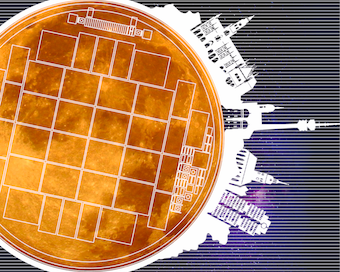Speaker
Description
The Inner Detector of the ATLAS experiment will be replaced by a new Inner Tracker (ITk) after the high-luminosity upgrade of LHC, which requires major improvements of the silicon pixel detectors in terms of radiation hardness, rate capability, etc. Monolithic CMOS pixels with depleted sensing volume (DMAPS) are part of the R&D program for the ITk outer pixel layers. Manufacturing these sensors in a commercial HV/HR CMOS process permits fast charge collection by drift and high volume production at affordable cost.
This work jointly presents two DMAPS prototypes, namely LF-Monopix01 and TJ-Monopix. They both integrate full readout electronics on the sensor substrate, employing the column drain readout architecture. LF-Monopix01 is a realization of the so called large fill-factor design in a 150nm CMOS process, which has proven to be a radiation hard approach thanks to the large charge collection electrode. The characterization of LF-Monopix01 has been performed both in lab and in test beams, showing a stable operational threshold <2000e$^-$ and detection efficiency ~99% even for chip samples after fluence of 10$^{15}$n$_{eq}$ /cm$^2$. TJ-Monopix is a small fill factor design in a 180nm CMOS technology. By using an innovative modified process, fully depleted sensing volume is expected despite a small collection electrode used. The aim of using small electrodes is to have an ultra low power analog front-end design, thus reducing significantly the total sensor power consumption. The wafers for TJ-Monopix were received from the foundry, and first measurement is expected to start in two weeks after chip dicing.
